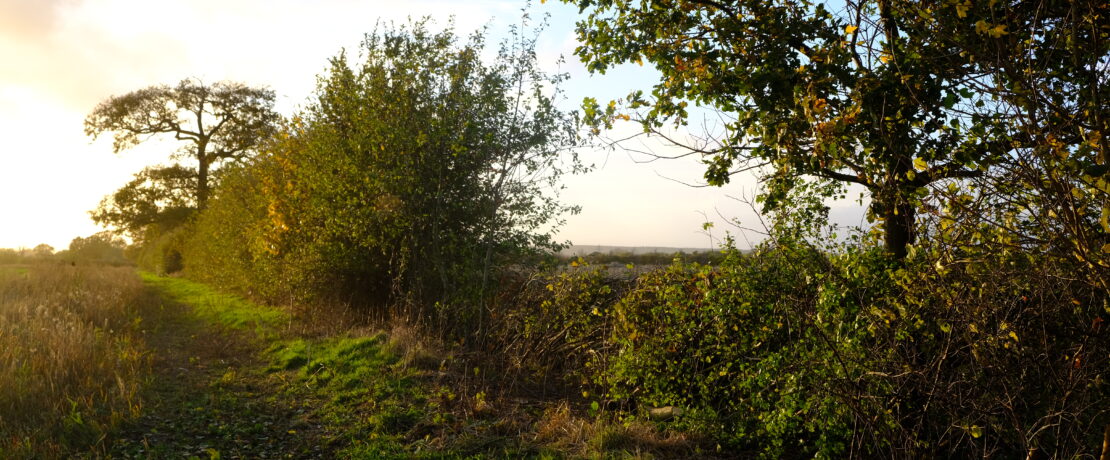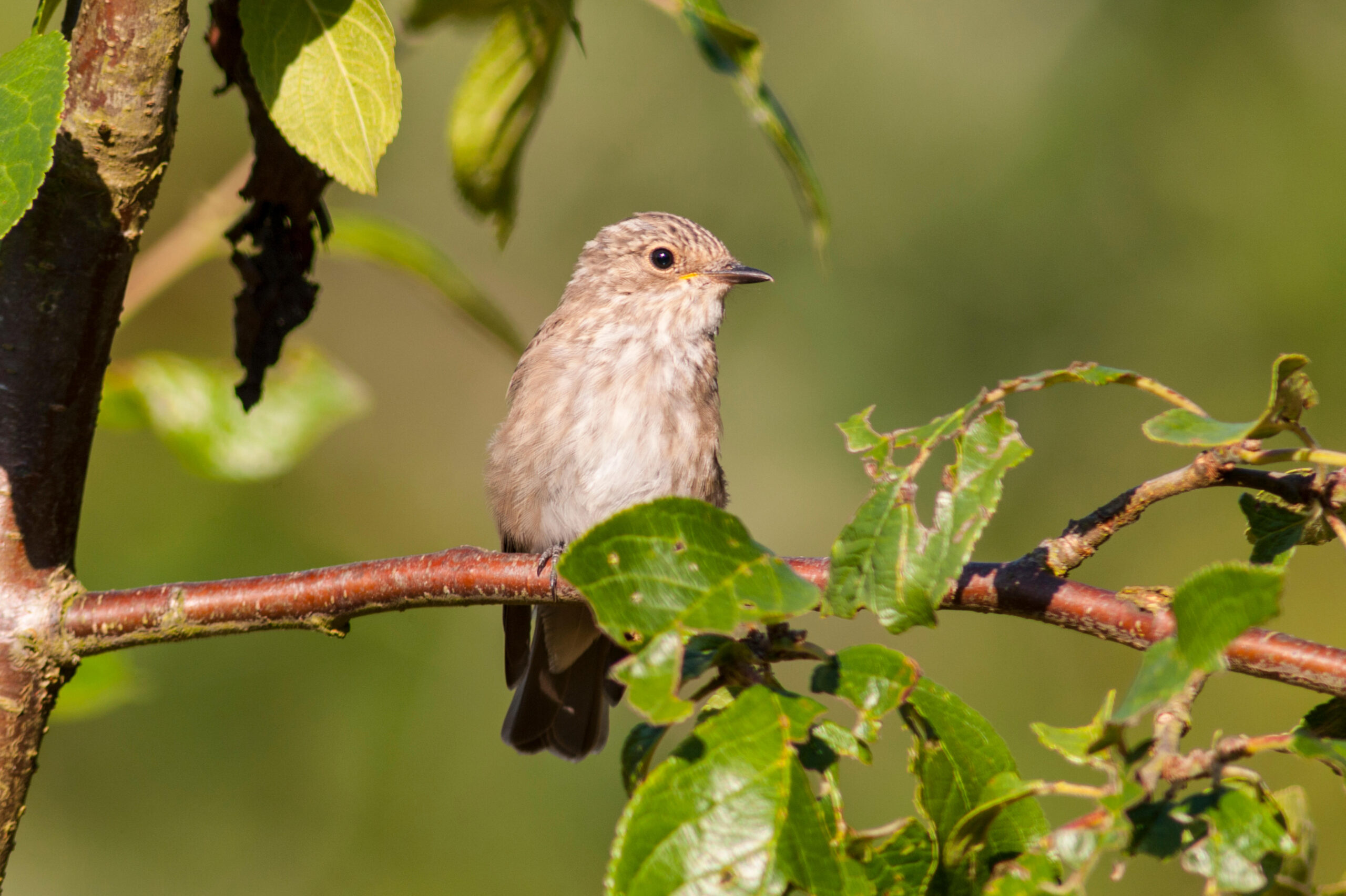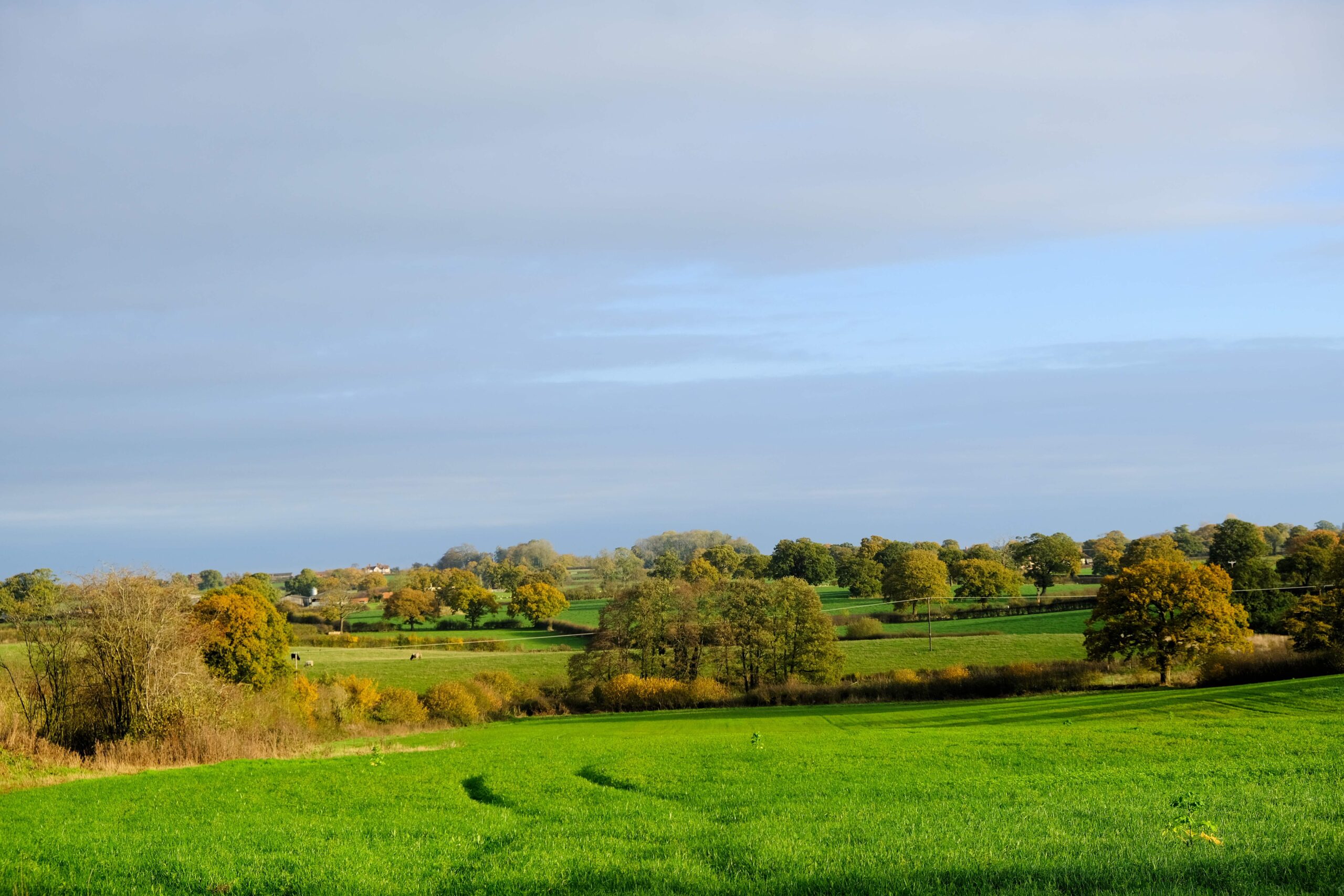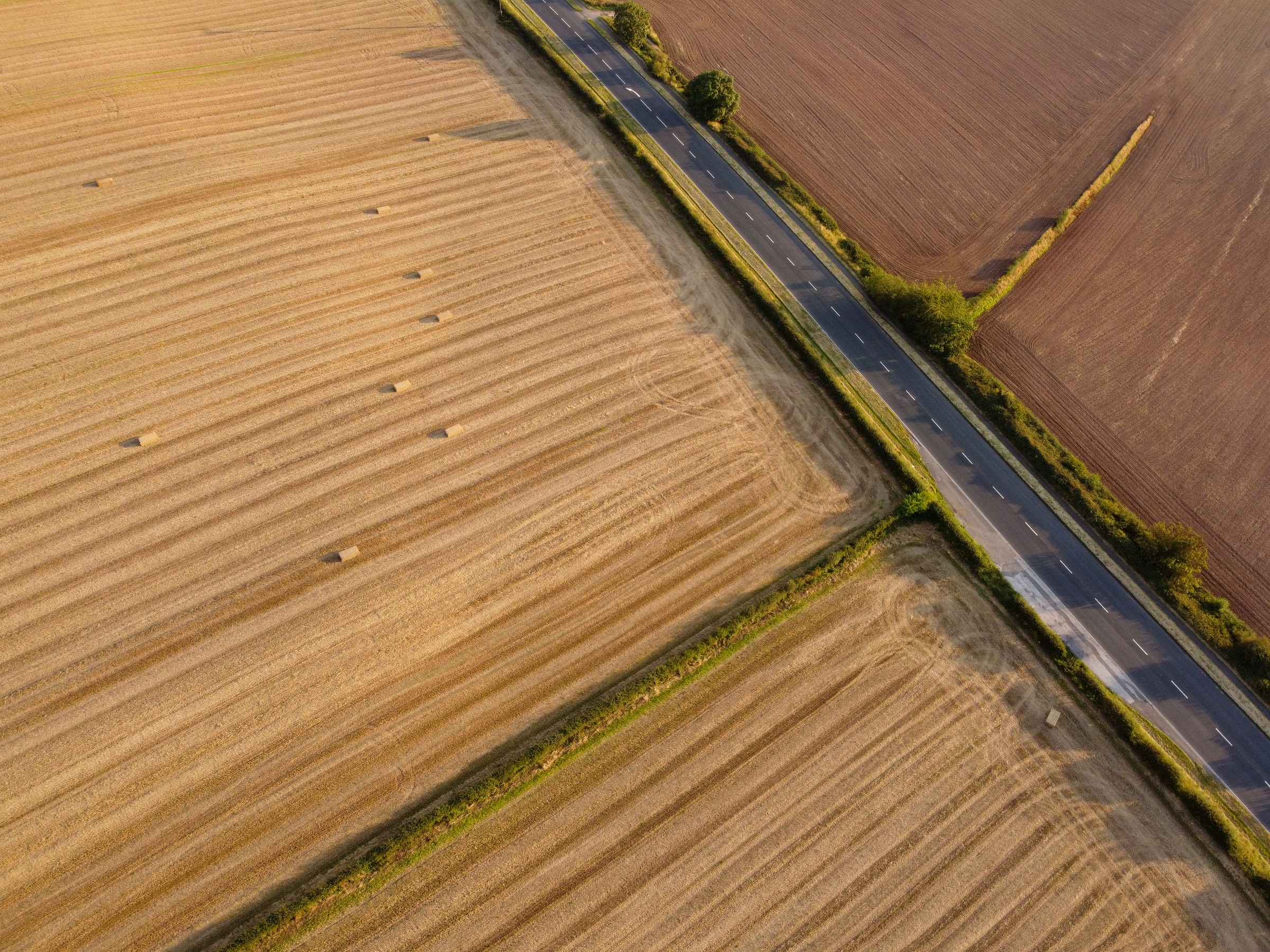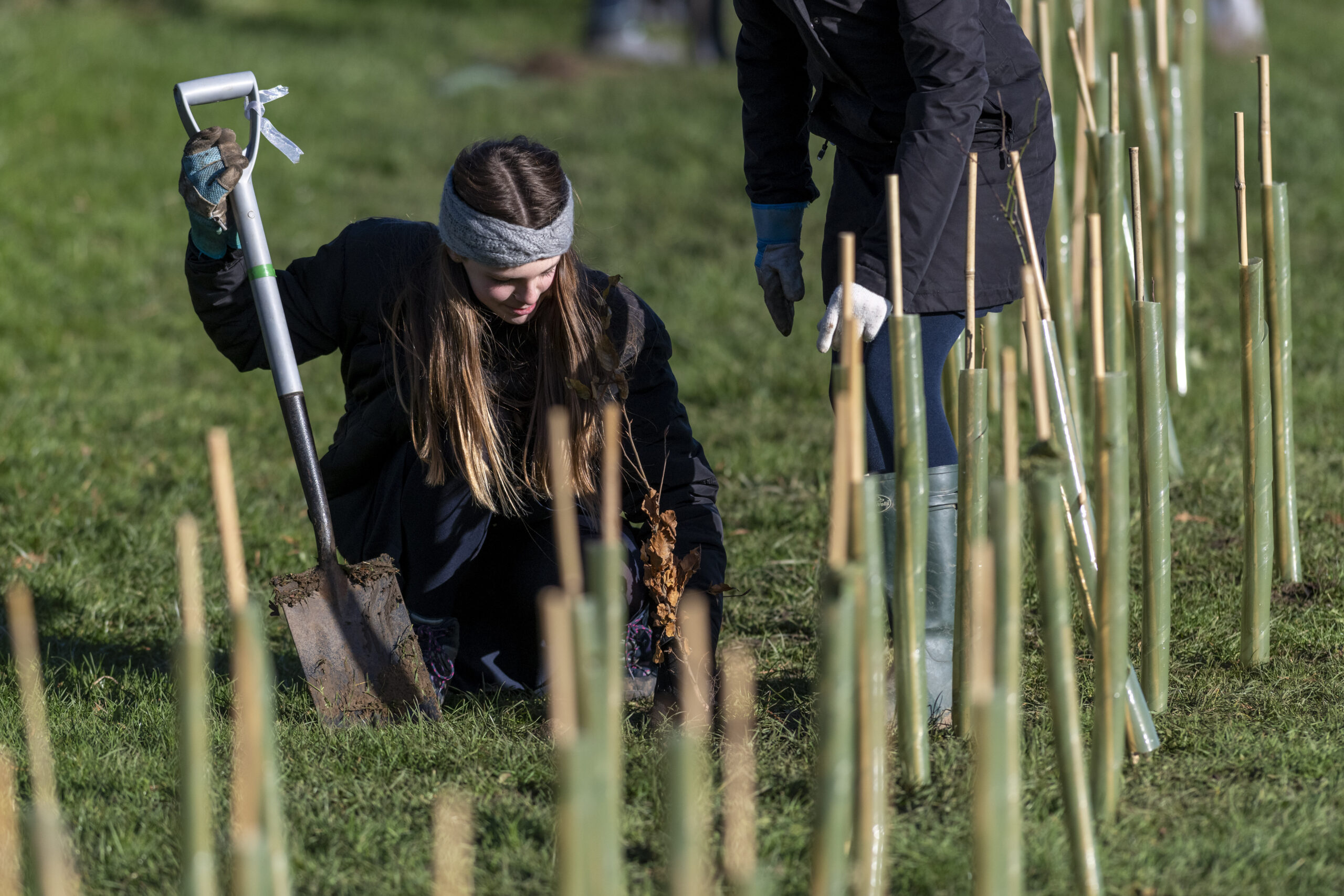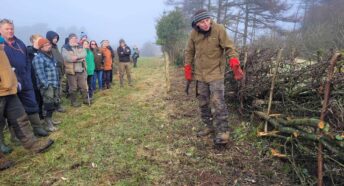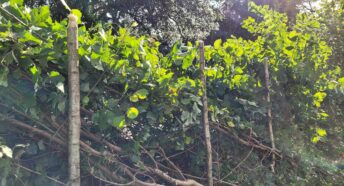How to Manage Hedgerows on your Land
Hedgerows are the unsung heroes of our landscape. These unique linear habitats weave through our landscape, providing shelter, shade and food for wildlife and livestock alike.
Insects, small mammals, birds and reptiles all find home and refuge in a hedgerow, from butterflies feeding on the base flora, to hazel dormice seeking shelter from predators. Most hedges have the capacity to be ecological powerhouses, but their wildlife value is entirely dependent on the way they are managed.
Why do hedgerows need management?
Without management a hedgerow will cease to exist. Hedges are essentially linear woodland in the making. Without any intervention they become ‘overstood’, gradually growing into a line of trees. On the other hand, with too intensive management, hedges degrade, becoming gappy and eventually dying. By managing a hedgerow well, a land manager can steward their hedgerow from these two extremes for as long as possible. However, eventually the hedgerow will need rejuvenation – an inevitable part of the lifecycle of any hedgerow.
Hedgerows are shaped by the tools and skills we deploy to manage them. Across a farm at any one time the hedges may be in several differing stages of their natural lifecycle. There may be newly planted hedges establishing themselves, others receiving routine care and maintenance or no maintenance at all, and some mature hedgerows requiring complete rejuvenation.
What exactly is rejuvenation?
Hedgelaying or coppicing are rejuvenation methods to return a hedgerow to an earlier stage in its lifecycle. Hedgelaying involves cutting hedgerow stems almost all the way through, laying them at an angle to the ground. Coppicing is when stems are cut all the way through, as close to the ground as possible. Both methods invigorate young, dense growth, giving a new lease of life to overtrimmed, gappy, or overstood hedgerows. Mature hedgerows (some of which in Britain are over 800 years old), require rejuvenating every 20 years or so.
When should hedgerows be trimmed?
The most common form of hedge management is trimming, and landowners can save money by trimming every two-three years, rather than giving hedgerows an annual cut. Tractor flails often get a bad rap; but when used correctly they offer a practical way to trim at scale. It is recommended where possible to manage hedgerows on a 2-3 year-cutting cycle. Doing so allows the hedgerow to produce flowers and berries, which only form on second year growth. When it is time to trim, aim to raise the cutting height by 10cm each year, allowing the hedge to grow incrementally taller and/or wider. Berries produced throughout autumn are essential winter forage for birds, so leaving cutting to later in the winter will keep these available as long as possible.
Hedges can also be chosen for non-intervention, perhaps to coppice or hedgelay on another year. Only 5% of your hedgerows should be rejuvenated in a year, as rejuvenation whether laying or coppicing will be disruptive to habitats and species.
For more information on best practice management see Hedgelink Management Advice.
Assessing the health of your hedgerow
Assessing hedgerow health is the first step to creating a plan for management. If you are a landowner, you can be paid to survey your hedgerow through the Sustainable Farming Incentive (SFI). The People’s Trust for Endangered Species have created a ‘Healthy Hedgerows’ survey as a way to simply assess your hedgerow condition in 6 easy questions. If you use Land App to map your farm, you can also now link Healthy Hedgerows surveys to this.
Funding Guide for Farmers
Information is up to date as of April 2025.
DEFRA funding for hedgerow management and planting falls within 2 of their Environmental Land Management (ELM) schemes. These are the SFI payments and Countryside Stewardship Scheme, summarised below.
Sustainable Farming Incentives (SFI)
SFI’s are currently closed to new applicants- See more details online.
Sustainable Farming Incentives, or SFI payments, provide financial support for the management of existing hedgerows on your land. Payments are available for the following:
- Assessing and record hedgerow condition using the Healthy Hedgerows survey (as above) or another method of your choosing.
- Managing hedgerows by either: incremental trimming, cutting on rotation every 2-3 years, or putting on a coppicing/laying cycle (not cutting).
- Maintaining or establishing hedgerow trees. Simply maintaining an existing tree or selecting and tagging an existing sapling to become a hedgerow tree.
Countryside Stewardship Scheme
After being temporarily frozen in 2024, capital grants have now reopened. New applications will be accepted in summer 2025.
Countryside Stewardship payments cover capital costs associated with hedgerows, including planting new hedgerows, gapping up, hedgelaying, coppicing, and planting a standard hedgerow tree.
Additional payments for substantial pre-work, top binding and staking are also available. See full list online.
Farming in Protected Landscapes
If your land falls within a National Landscape such as Mendip Hills or Cotswolds, there may be funding available for capital costs associated with hedgerow planting or rejuvenation on your land.
Mendip Hills National Landscape
Funding for Community Groups, Schools & Parish Councils
To browse a list of national funding grants available for hedgerow planting, see Hedgelink Grants and Funding.
Below are grant offers available in the South West for community groups, schools and parish councils.
A small grant scheme aimed at community groups in the South Gloucestershire area. Grants of up to £500 available for a range of natural landscape enhancement, hedgerows are one the funded features.
The Environment Fund supports charitable and community activities that improve local biodiversity or have a positive impact on the environment for local people.
Forest of Avon Trees for Climate
Available within all England Community Forest areas, Trees for Climate grants cover up to 100% of the costs of tree planting projects and provide up to 15 years of maintenance payments. Contact your local Forest of Avon Advisory to see if your hedge project could benefit from this funding.
Funding available for hedge planting in the South West, information up to date as of April 2025.
